
Some ideas don’t make sense until suddenly they do.
Ever since it became possible to write third-party iOS apps, we’ve received the occasional request to bring Transmit to iOS and, to be honest, it never made much sense to us. That is, until this year’s WWDC.
Up until that point, iOS apps had very limited reach in terms of access to other apps’ documents, so we struggled to find an answer to our time-honored litmus test of “what would we use this for?” Was an app that simply allowed you to transfer files in and out of itself particularly useful?
Especially with many highly-regarded file storage and document reader apps already on the App Store, it seemed like our chances of carving a worthwhile niche were tiny at best. We experimented with the idea a little and ultimately shelved it.
Then came the introduction of iOS 8. It’s an exciting update for users, and a really exciting release for developers, not least because of a little something called App Extensions. By utilizing App Extensions, Transmit could effectively provide standard file transfer protocols for any iOS 8 app. Overnight, this idea that made very little sense suddenly made all the sense in the world.
And so, after a bit of a mad dash to get it ready in time for iOS 8’s debut, we’re proud to introduce Transmit iOS. It’s the world’s best file transfer client, now seamlessly integrated right into your iPhone or iPad.

Browsing a directory listing
Not just a pretty face, Transmit iOS shares the same rock-solid engine as the Mac version, so you’ll find all of our currently supported protocols: FTP, SFTP, WebDAV, Amazon S3, and S3-compatible services such as DreamObjects.
Every compatibility and performance tweak that has made its way into the Transmit engine over the last 16 years (!) is present and accounted for. Future improvements and fixes will make their way to both the Mac and iOS versions.
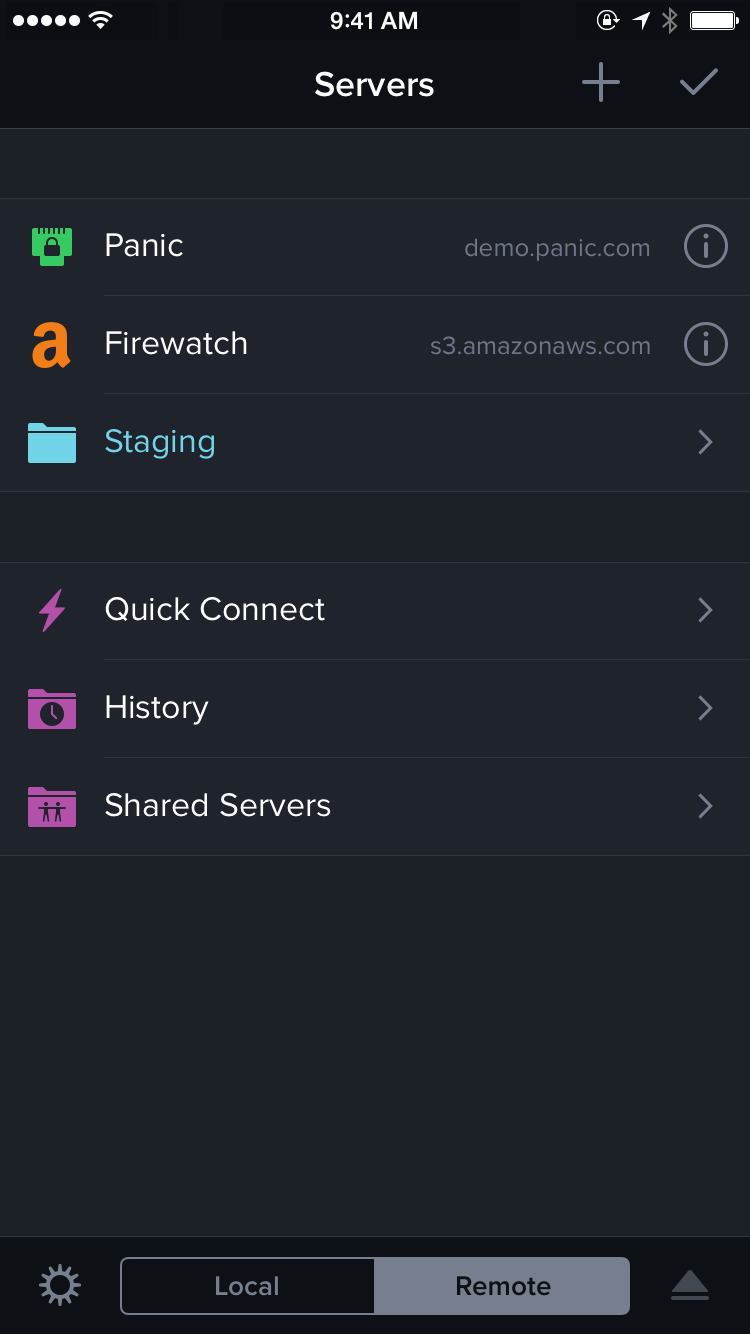
Browsing available servers and connection options
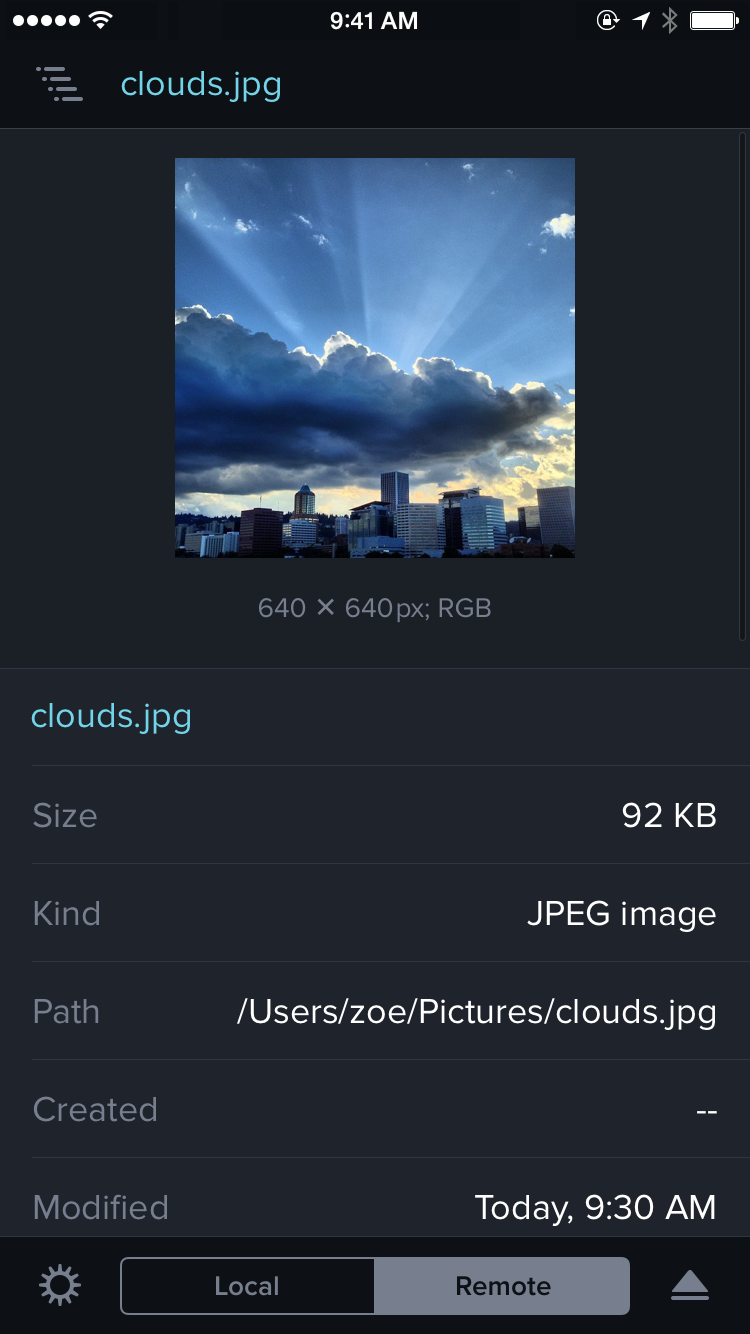
Previewing a remote image
On iOS, Transmit gets a fresh new look — in perfect harmony with iOS 8’s style but with a bit of our own flair. In the Transmit app, you can store, download, and upload files as with any pre-iOS 8 file manager, but it’s the way Transmit extends your whole iOS experience that’s the best part.
Let’s start with sharing.
You’re probably already familiar with the Share button in iOS. If you’re, say, looking at a photo, you can tap the Share button and send the photo by email, iMessage, AirDrop, and so on. With Transmit iOS installed, you can also now send that photo (or other document) to any FTP, SFTP, WebDAV or Amazon S3 server, right from Photos.
In other words, any iOS app that supports the Share sheet magically gains support for these protocols when you install Transmit iOS.
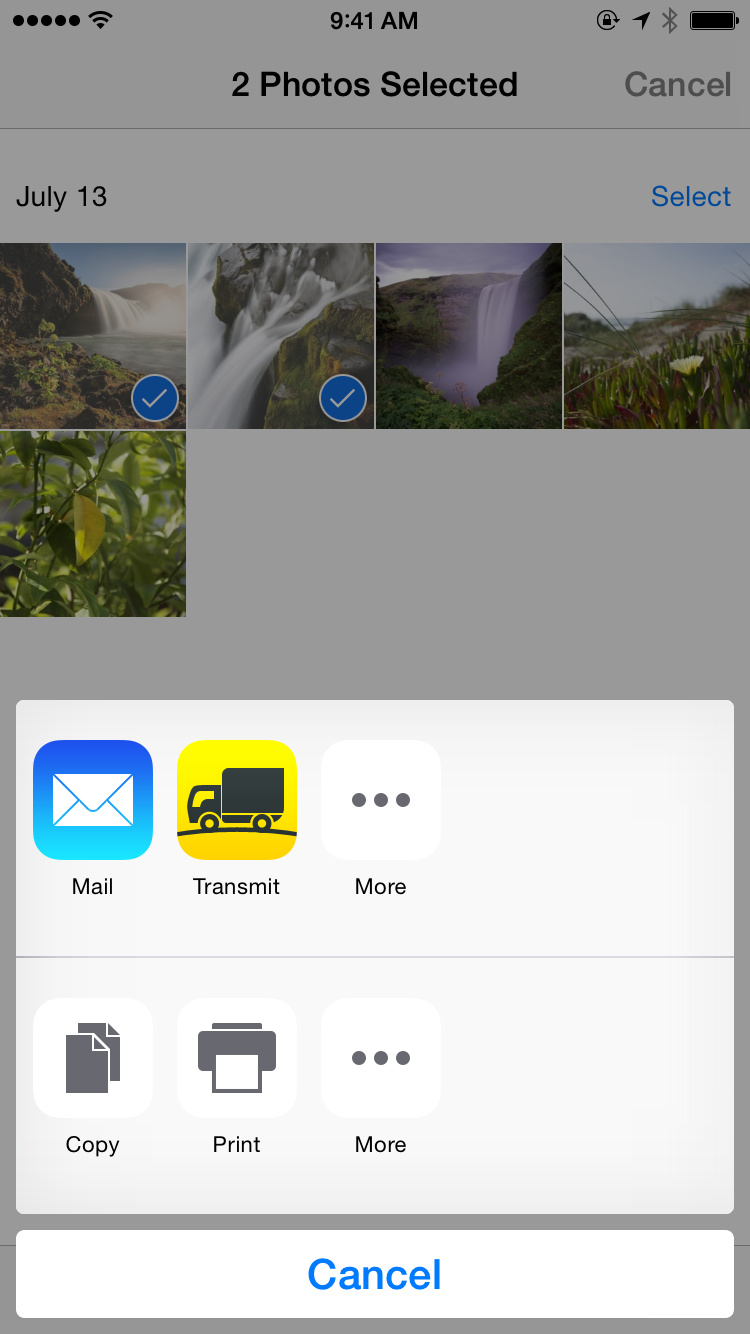
Sharing photos with Transmit iOS
Without leaving the app you’re in, you can bring up a full Transmit interface within that app, navigate to a particular folder, and send your file. Then Transmit goes away and you’re right back where you were, without any cumbersome app switching. That’s a big deal, and a first for iOS.
But wait, there’s more!
New in iOS 8 is the Document Picker. The Document Picker is an extensible way for iOS apps to open a document from an outside source.
Transmit iOS hooks in here too, which means — you guessed it — any iOS 8 app that supports the Document Picker can now open files remotely from your FTP, SFTP, WebDAV or Amazon S3 server, without leaving that app.
(You can even re-save the document, and the changes will go back to the server it came from!)
Concerned about security? If you’d like, Transmit iOS can restrict access to your servers by requiring Touch ID authentication. That means you don’t have to remember or re-enter your server password each time.
We think Transmit iOS is a fantastic new way for advanced users to manage files on their iPhone, iPad, and beyond. Since it’s a brand new 1.0 product, we’ll be looking forward to your feedback to help us steer it in the right direction.
Please give Transmit iOS a try and let us know what you think!
Also worth noting: Transmit iOS is currently only $9.99 for a limited time. If you want to get in on this incredible new tool, we suggest doing it quickly!
(One last note: many people here were involved in making Transmit iOS, including years of FTPKit care and feeding from Wade and Will, and Neven’s immaculate design work, but I wanted to specifically send a big thank you to all-around Panic good guy Logan, who worked tirelessly to make Transmit iOS happen. Thanks so much, Logan!)

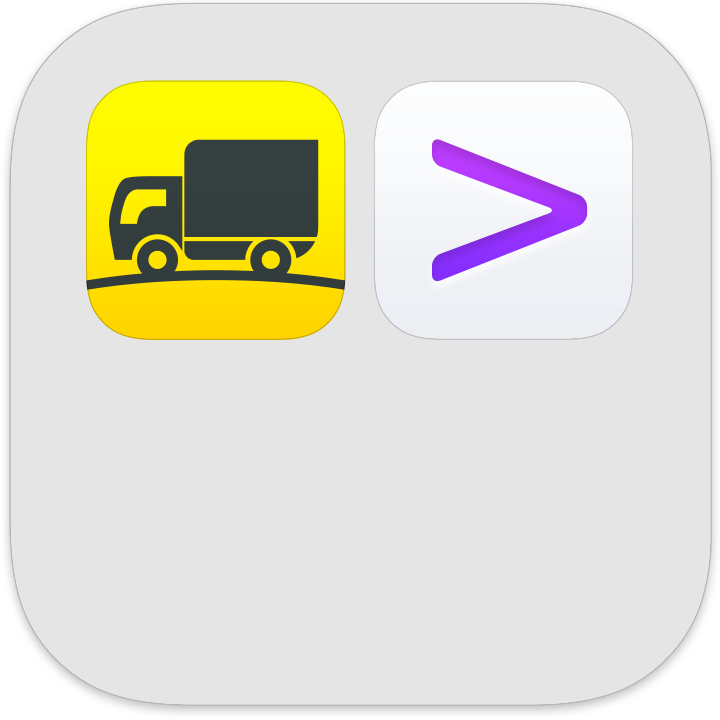
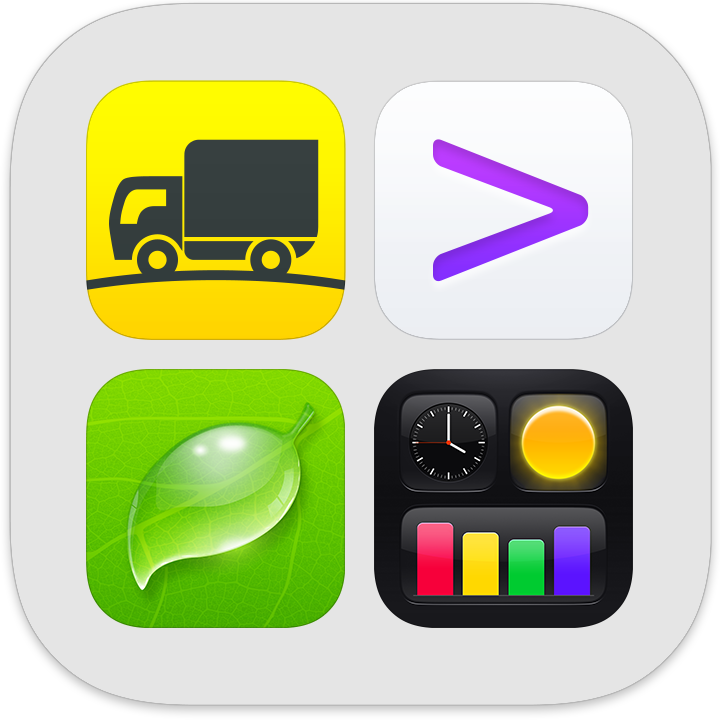
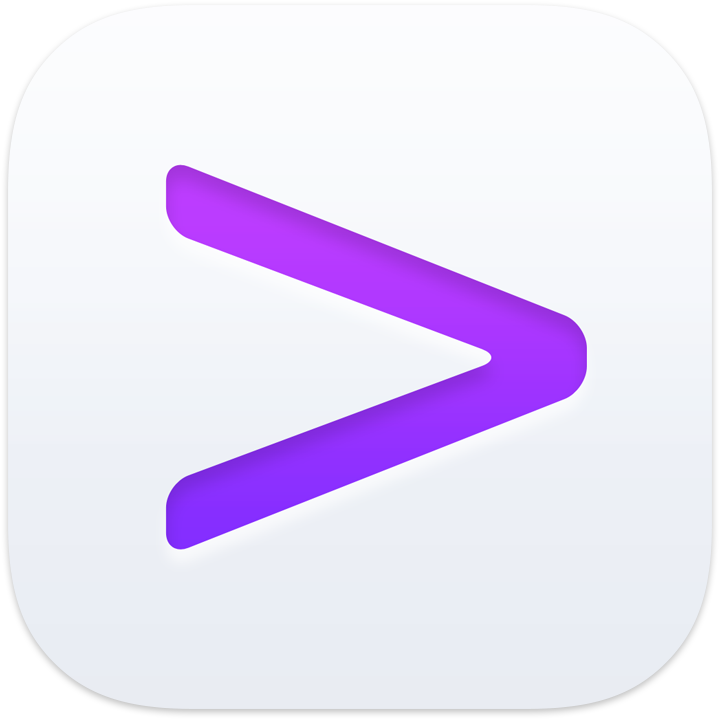
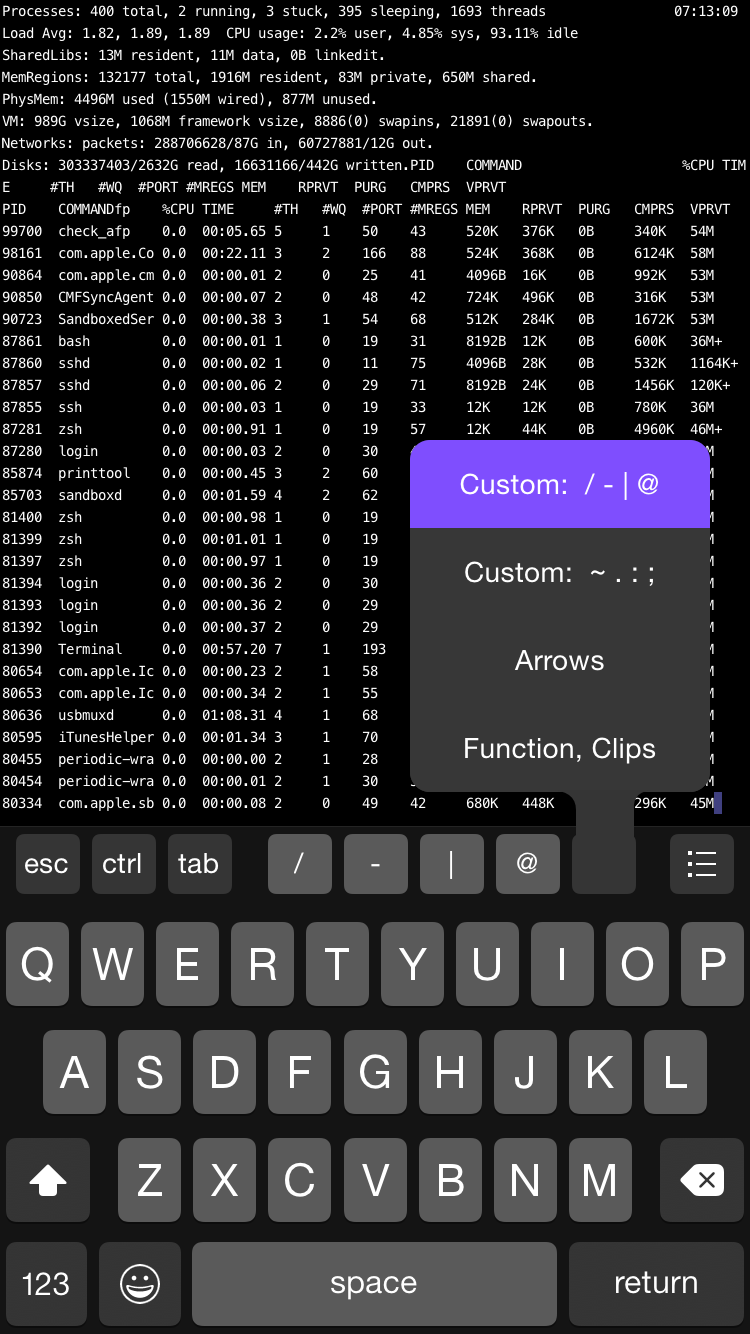







 Sometimes at Panic we build internal stuff that never sees the light of the outside world. This is one of those projects: an automatic in/out tracker for the Panic Team.
Sometimes at Panic we build internal stuff that never sees the light of the outside world. This is one of those projects: an automatic in/out tracker for the Panic Team. Over a year ago, I wrote a blog post about Coda and Sandboxing.
Over a year ago, I wrote a blog post about Coda and Sandboxing.